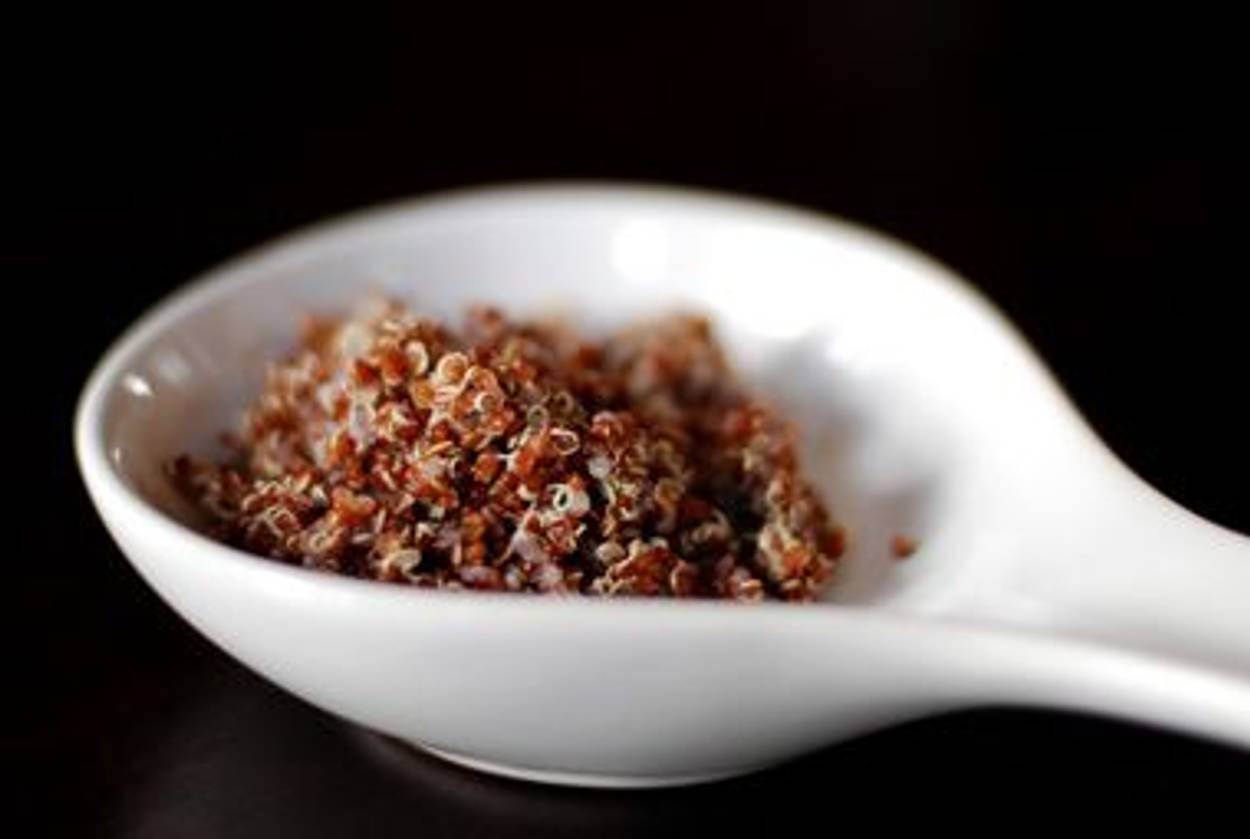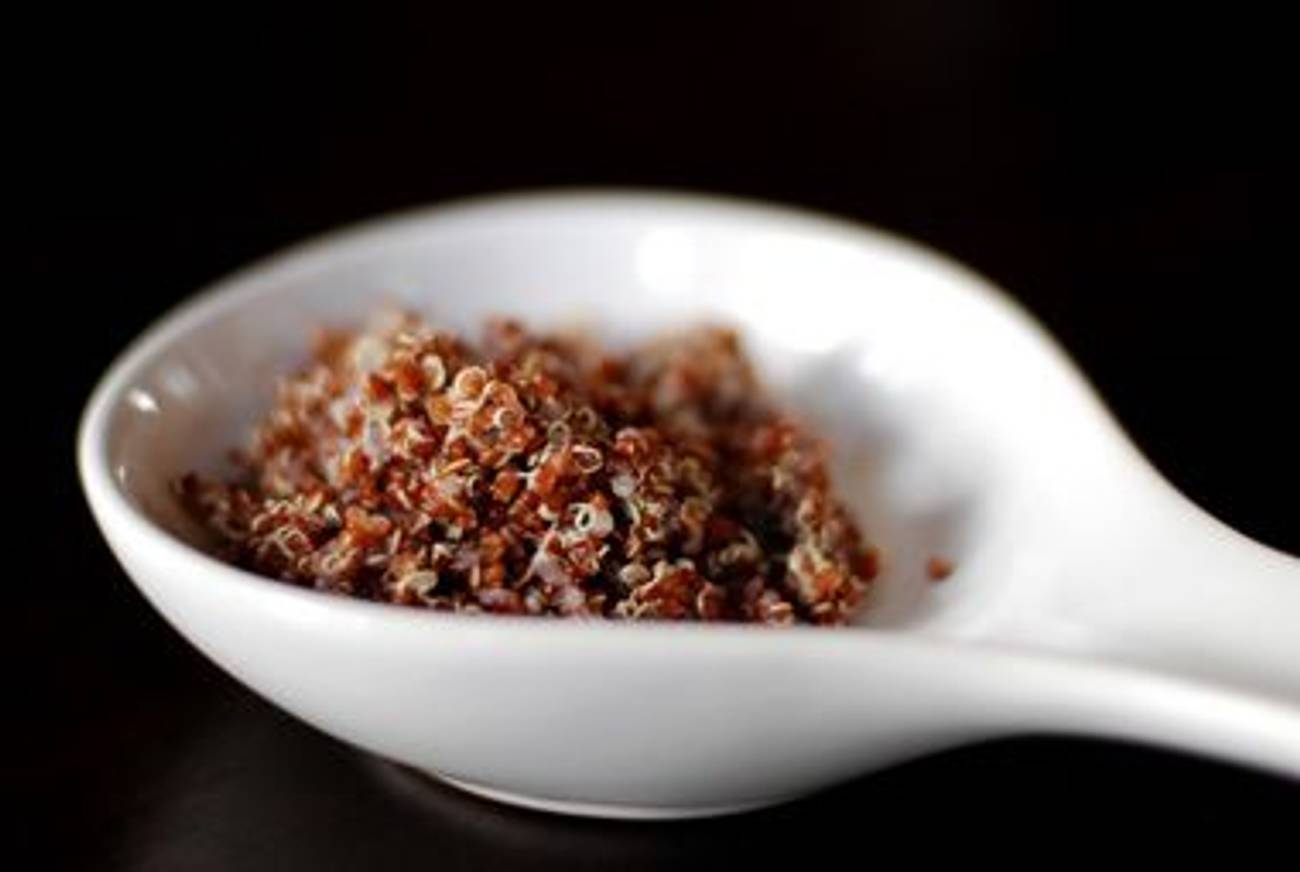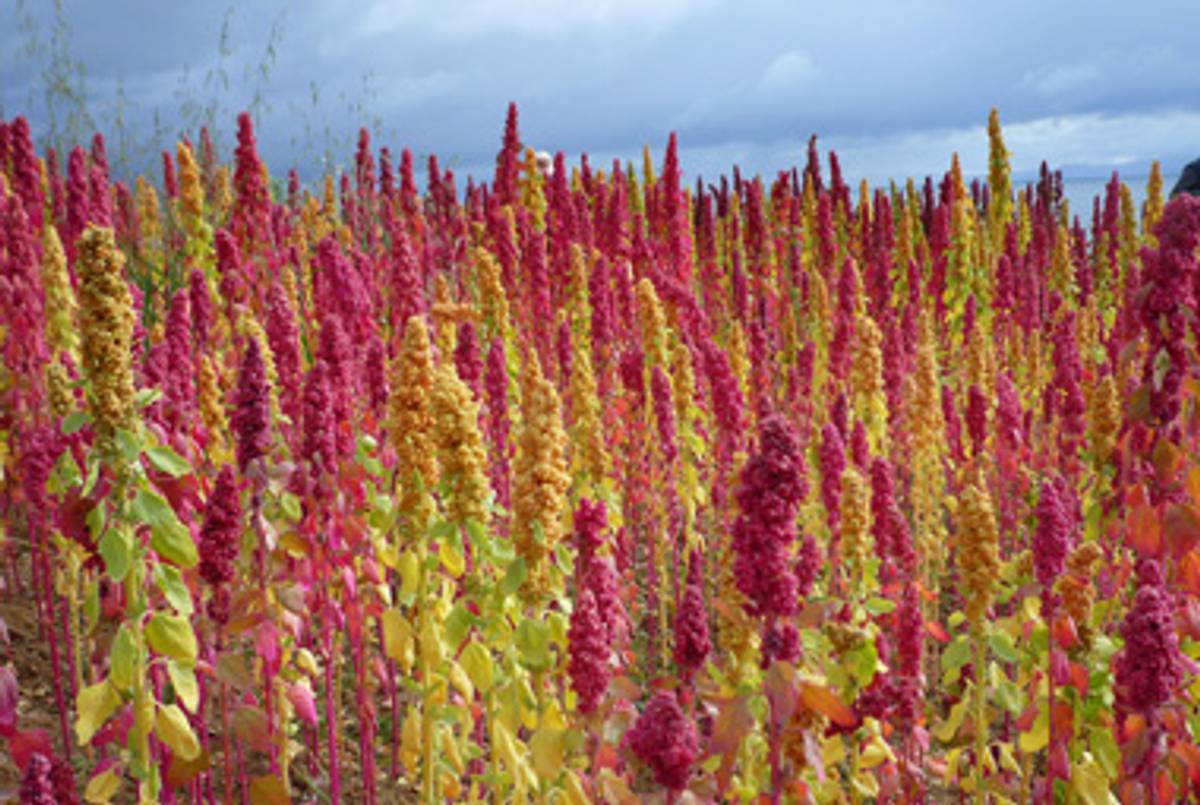Off the Table
After a kosher-certifying agency deemed quinoa, the South American grain-like seed, Passover-compliant, it’s become a darling of the Passover table. But now rabbis are having doubts.




In 1999, a humble South American foodstuff took an unlikely seat at the Passover table. The Star-K, one of the country’s leading kosher certifying agencies, proclaimed quinoa—the starchy seed that is a darling of natural food lovers—to be kosher for Passover. Despite its fluffy, grain-like appearance, quinoa was designated a member of the goosefoot species, a cousin to beets, and completely unrelated to the five forbidden chametz grains: wheat, spelt, oats, rye, and barley. Furthermore, the Star-K deemed quinoa not kitniyot (literally “small things”)—an additional category of foods such as rice and legumes that Ashkenazi Jews customarily avoid on Passover—which meant it was kosher for all Jews, not just Sephardim that have the practice of eating kitniyot during Passover.
Until the 1980s, quinoa, originally from the Andes Mountains and now primarily cultivated in Peru and Bolivia, was essentially unknown in the United States, let alone among American Jews. But by the mid-2000s it vaulted to MVP status. Quinoa seemed to have it all: the satisfying heft of a starch, a high level of protein, and enough culinary versatility as a Passover grain to be turned into salads, stuffing, fritters, and a perfectly respectable oatmeal substitute. Less than a decade after being designated kosher for Passover, quinoa could be found in Passover cookbooks and on the ample buffet tables at Passover resorts. A handful of rabbis disagreed with Star-K’s decision, but they found their dissenting opinions largely drowned out by the endorsement of certifying agencies and consumers’ overwhelming enthusiasm for quinoa. As food writer Adeena Sussman put it in a 2008 article for Gourmet, “this grain-that’s-not-a-grain is becoming the belle of the Passover ball.”
But this year, the dissent has finally gained traction. In February, the Star-K released a consumer alert stating that some quinoa fields had been found in proximity to fields growing “certain crops”—by which they mean chametz or kitniyot grains—raising the risk of cross-contamination. As a result, consumers were advised to only purchase quinoa with reliable kosher-for-Passover certification. A few weeks later, the Chicago Rabbinical Council, whose influence and authority extend beyond the Chicago region, released a similar statement approving quinoa for Passover only if it was imported from Bolivia (where no chametz-contaminated fields have been found), packed in quinoa-only plants, and hand-checked for foreign grains by consumers before the first night of Passover. The statement gives Trader Joe’s, Ancient Harvest, and Israel’s Sugat brands the green-light for 2011, at least.

If the Star-K’s supervisors found evidence of chametz growing near quinoa fields, the new regulations placed on Passover quinoa-eating this year make sense. But in fact the story does not end with a simple bowl of Bolivian porridge. In practice, it seems that the official approval stamp from the certifying agencies does not guarantee much of anything.
I recently took the subway to Pomegranate, the upscale kosher superstore in Brooklyn’s heavily Orthodox Midwood neighborhood, to stock up for Passover. Last year, along with matzoh, marinara sauce, and overpriced spices, I purchased at Pomegranate two boxes of Passover-certified quinoa. This time I could not find it anywhere. When I asked a store clerk, he gave me a curious look, then walked me over to the tiny kitniyot section where the quinoa sat next to the rice and chickpeas. “You know what kitniyot is?” he asked. “Sure,” I said. “So,” he said, glancing sheepishly at the package then back at me, “the choice is up to you.”
The marginalization of quinoa to Pomegranate’s kitniyot section is not the only indication that things may be shifting. Some catering companies like Boston’s Catering by Andrew and 12 Tribes in San Francisco follow the Chicago Rabbinical Council stated guidelines. Others are ditching quinoa entirely. This year, for example, the Fairmont Scottsdale Princess resort in Arizona will substitute faux Israeli couscous (made from matzoh meal) for the quinoa recipes they have offered in past years. Another caterer, whose client is one of the country’s most prestigious Passover hotels, asked to remain anonymous and refused to disclose whether quinoa would be on this year’s menu. “It is just too controversial,” he said.
The Orthodox Union, arguably the country’s most influential certifying agency, takes a soft-handed approach to the controversy. Quinoa is on its official kitniyot list, cited as a food that “may be kitniyot” and therefore should be avoided. But its Passover guide ultimately punts it, advising customers to consult their rabbis.
When it comes to kashrut in other communities, societal pressure to be the most kosher sometimes trumps common sense, or even Jewish law. As rabbi and food historian Gil Marks writes in The Encyclopedia of Jewish Food, kitniyot was problematic from the start and for many generations was not taken seriously. “In the thirteenth century,” he writes, “Rav Samuel ben Solomon of Falaise called the prohibition against kitniyot … an erroneous custom.” And yet, over the centuries, it has gained an increasingly strong foothold for the simple reason that, once enough people say something is wrong for long enough, it begins to legitimately feel wrong.
Quinoa is the latest in a long line of foods—from corn to peanuts and green beans—that have been designated as kitniyot despite evidence to the contrary. The revered Orthodox rabbi Rav Moshe Feinstein concluded that peanuts are a New World food—something the European rabbis did not know about when the notion of kitniyot began, and therefore not required to be included in the minhag (custom). And yet it is impossible to find Passover-certified peanuts or peanut butter in stores today. Granting them certification would unfortunately bring, as the caterer said, too much controversy.
As for quinoa: While it is not biologically speaking a grain and is unarguably a New World food, past trends would suggest that quinoa is headed for the kitniyot pile, despite its endorsement of the Star-K and Chicago Rabbinical Council. The question is, how much will consumers push back against this? For the last 12 years, Jews have grown used to the idea of quinoa as Passover’s starchy savior. They may not be willing to let go so easily. In the 19th century, there was an attempt to classify potatoes as kitniyot, as Marks writes, “but this was duly rejected by the populace.”
As for me, I decided not to buy the quinoa at Pomegranate this year. They were charging $6.99 for a one-pound bag—nearly double the typical price. I bought it at Trader Joe’s instead.